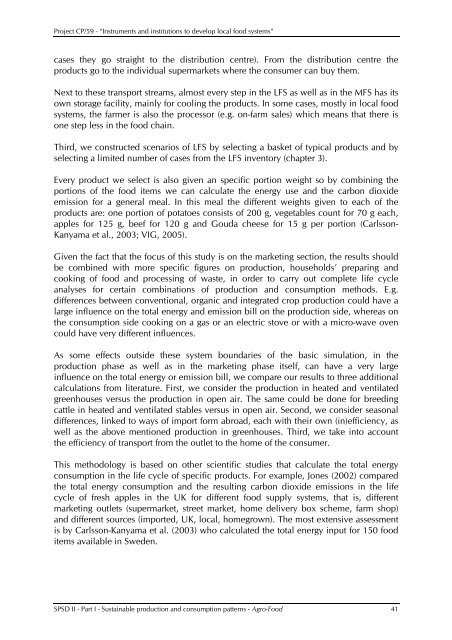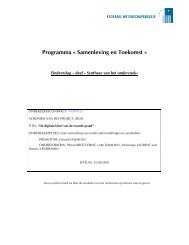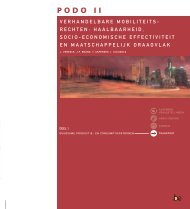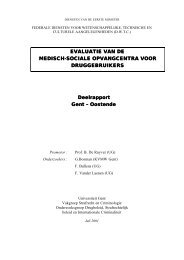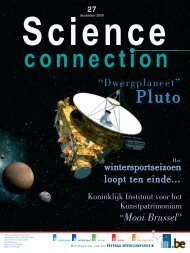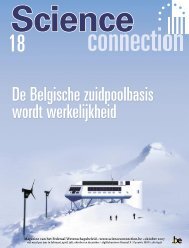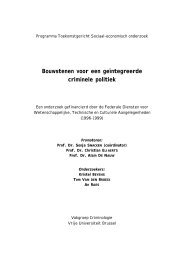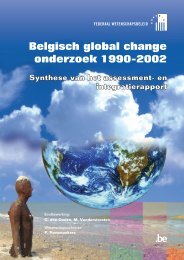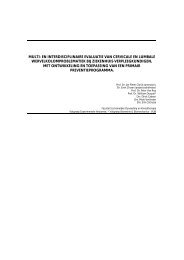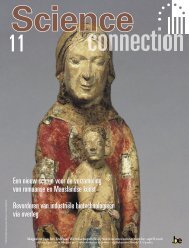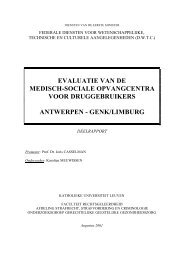chapter 3 inventory of local food systems
chapter 3 inventory of local food systems
chapter 3 inventory of local food systems
Create successful ePaper yourself
Turn your PDF publications into a flip-book with our unique Google optimized e-Paper software.
Project CP/59 - “Instruments and institutions to develop <strong>local</strong> <strong>food</strong> <strong>systems</strong>”<br />
cases they go straight to the distribution centre). From the distribution centre the<br />
products go to the individual supermarkets where the consumer can buy them.<br />
Next to these transport streams, almost every step in the LFS as well as in the MFS has its<br />
own storage facility, mainly for cooling the products. In some cases, mostly in <strong>local</strong> <strong>food</strong><br />
<strong>systems</strong>, the farmer is also the processor (e.g. on-farm sales) which means that there is<br />
one step less in the <strong>food</strong> chain.<br />
Third, we constructed scenarios <strong>of</strong> LFS by selecting a basket <strong>of</strong> typical products and by<br />
selecting a limited number <strong>of</strong> cases from the LFS <strong>inventory</strong> (<strong>chapter</strong> 3).<br />
Every product we select is also given an specific portion weight so by combining the<br />
portions <strong>of</strong> the <strong>food</strong> items we can calculate the energy use and the carbon dioxide<br />
emission for a general meal. In this meal the different weights given to each <strong>of</strong> the<br />
products are: one portion <strong>of</strong> potatoes consists <strong>of</strong> 200 g, vegetables count for 70 g each,<br />
apples for 125 g, beef for 120 g and Gouda cheese for 15 g per portion (Carlsson-<br />
Kanyama et al., 2003; VIG, 2005).<br />
Given the fact that the focus <strong>of</strong> this study is on the marketing section, the results should<br />
be combined with more specific figures on production, households’ preparing and<br />
cooking <strong>of</strong> <strong>food</strong> and processing <strong>of</strong> waste, in order to carry out complete life cycle<br />
analyses for certain combinations <strong>of</strong> production and consumption methods. E.g.<br />
differences between conventional, organic and integrated crop production could have a<br />
large influence on the total energy and emission bill on the production side, whereas on<br />
the consumption side cooking on a gas or an electric stove or with a micro-wave oven<br />
could have very different influences.<br />
As some effects outside these system boundaries <strong>of</strong> the basic simulation, in the<br />
production phase as well as in the marketing phase itself, can have a very large<br />
influence on the total energy or emission bill, we compare our results to three additional<br />
calculations from literature. First, we consider the production in heated and ventilated<br />
greenhouses versus the production in open air. The same could be done for breeding<br />
cattle in heated and ventilated stables versus in open air. Second, we consider seasonal<br />
differences, linked to ways <strong>of</strong> import form abroad, each with their own (in)efficiency, as<br />
well as the above mentioned production in greenhouses. Third, we take into account<br />
the efficiency <strong>of</strong> transport from the outlet to the home <strong>of</strong> the consumer.<br />
This methodology is based on other scientific studies that calculate the total energy<br />
consumption in the life cycle <strong>of</strong> specific products. For example, Jones (2002) compared<br />
the total energy consumption and the resulting carbon dioxide emissions in the life<br />
cycle <strong>of</strong> fresh apples in the UK for different <strong>food</strong> supply <strong>systems</strong>, that is, different<br />
marketing outlets (supermarket, street market, home delivery box scheme, farm shop)<br />
and different sources (imported, UK, <strong>local</strong>, homegrown). The most extensive assessment<br />
is by Carlsson-Kanyama et al. (2003) who calculated the total energy input for 150 <strong>food</strong><br />
items available in Sweden.<br />
SPSD II - Part I - Sustainable production and consumption patterns - Agro-Food 41


